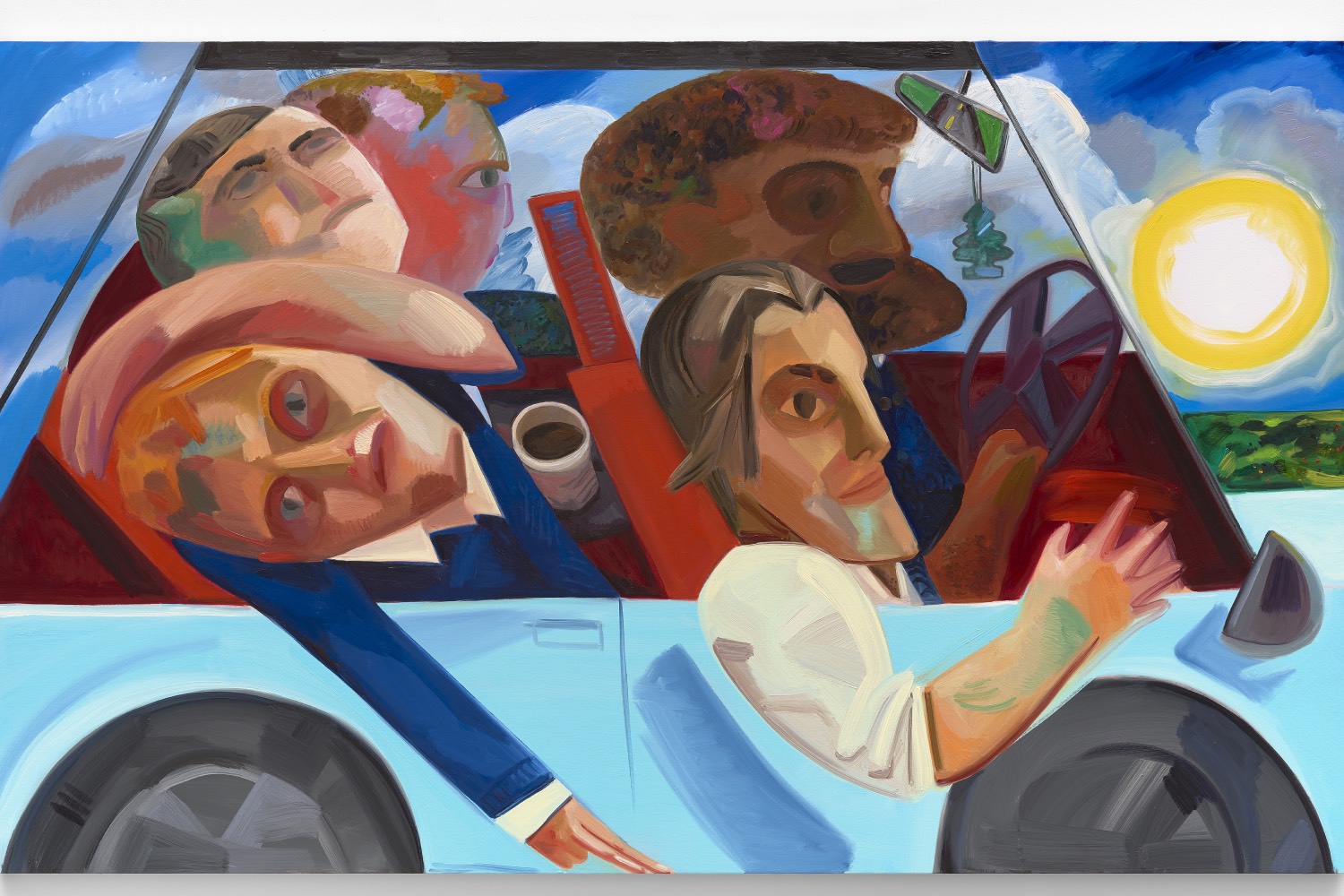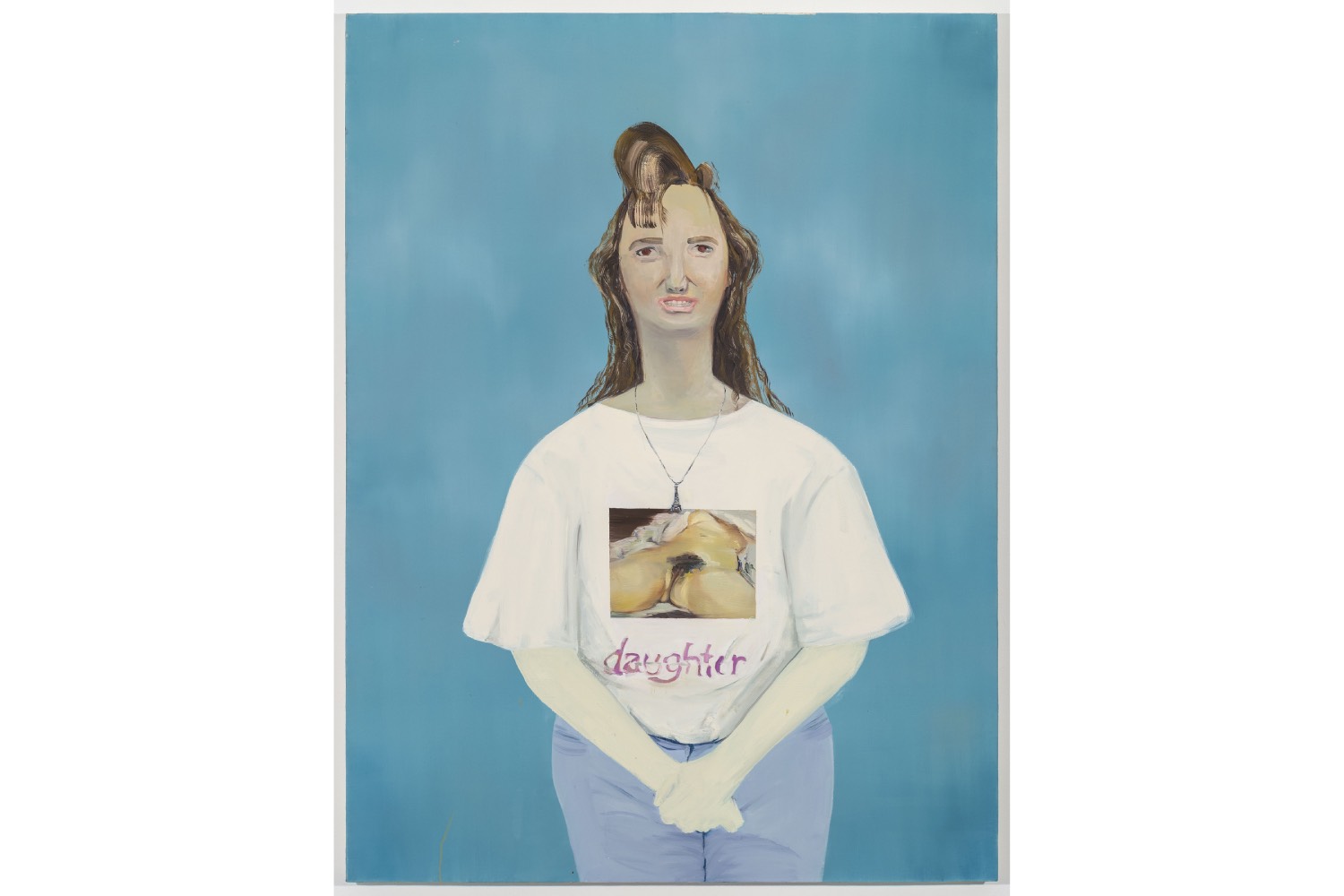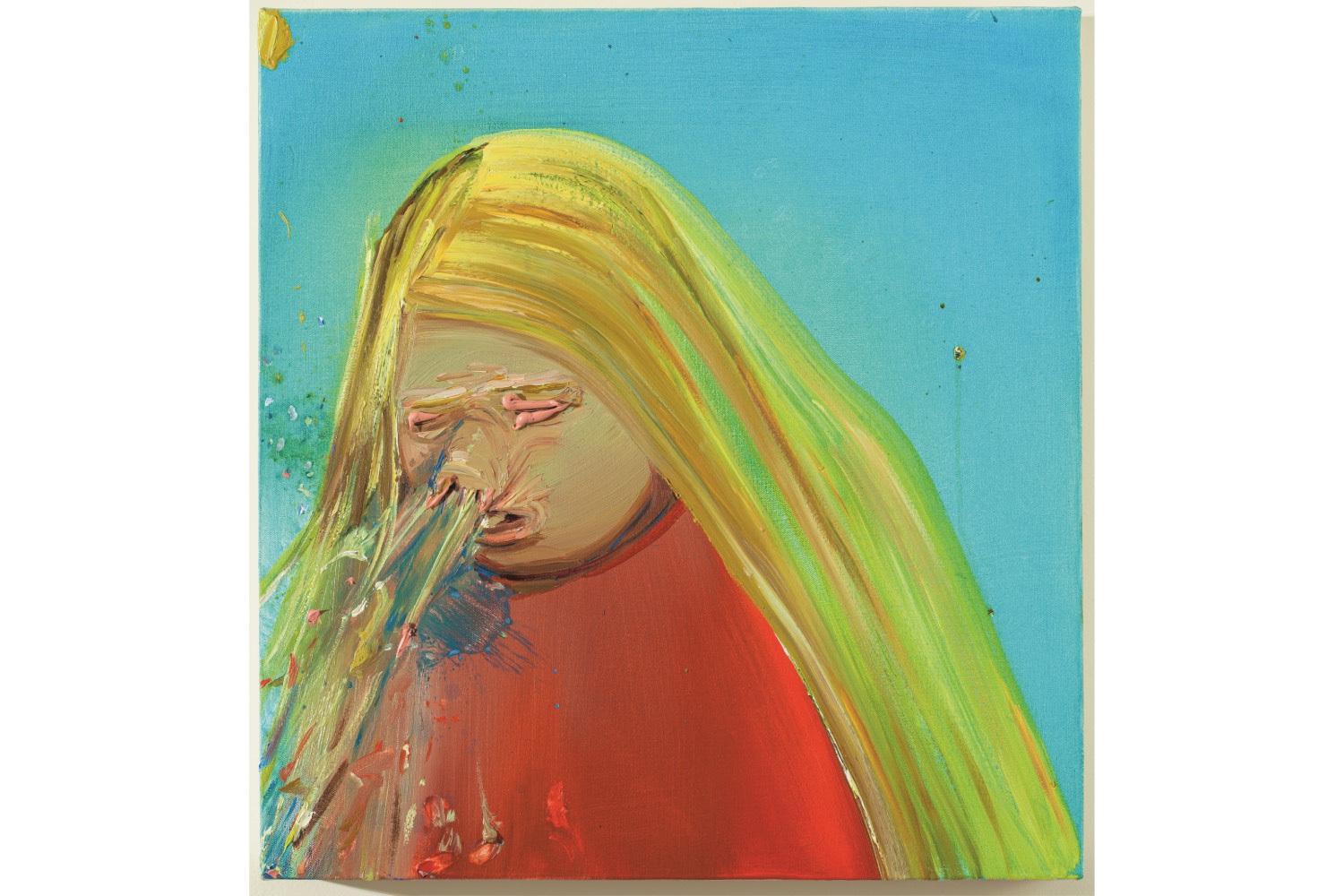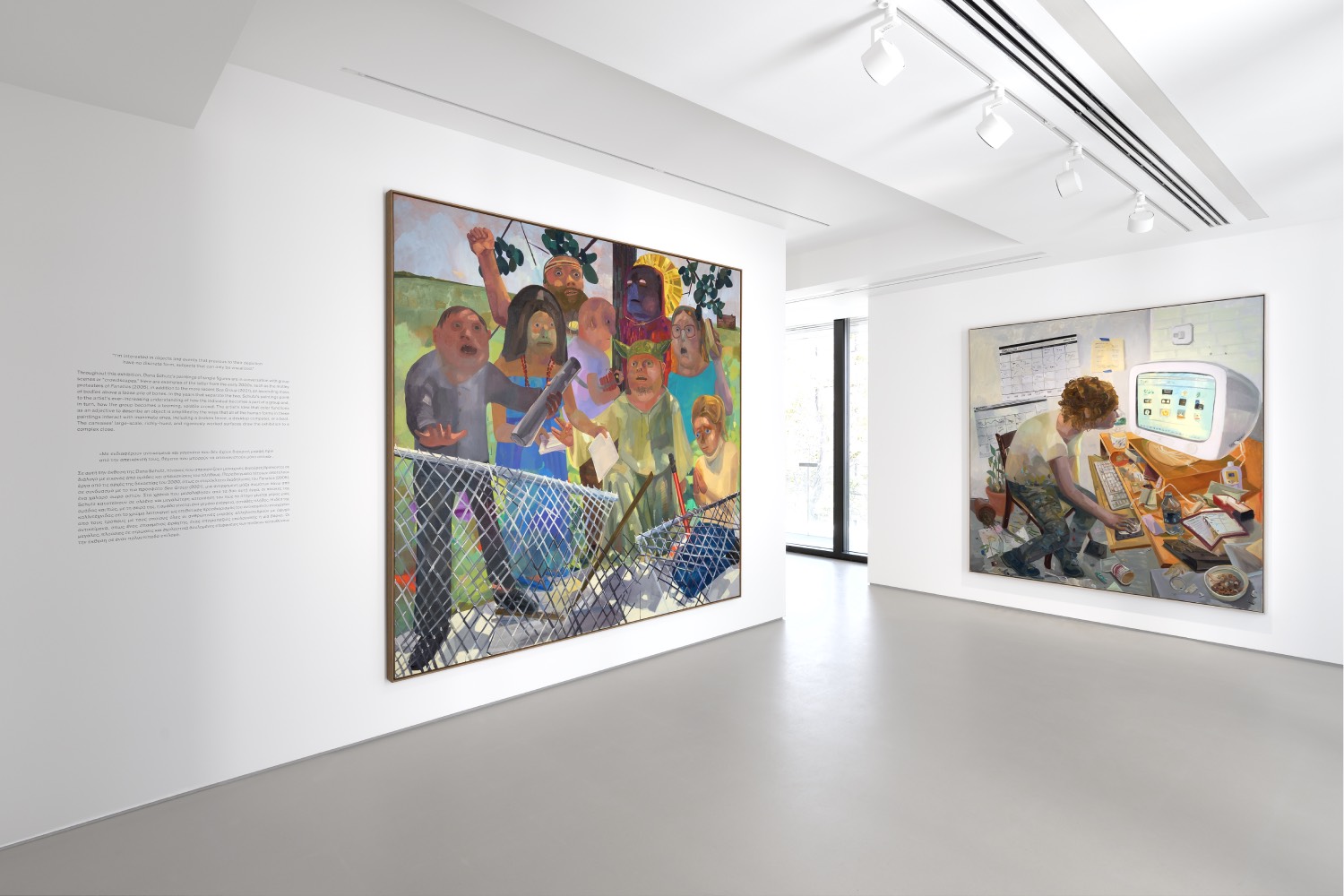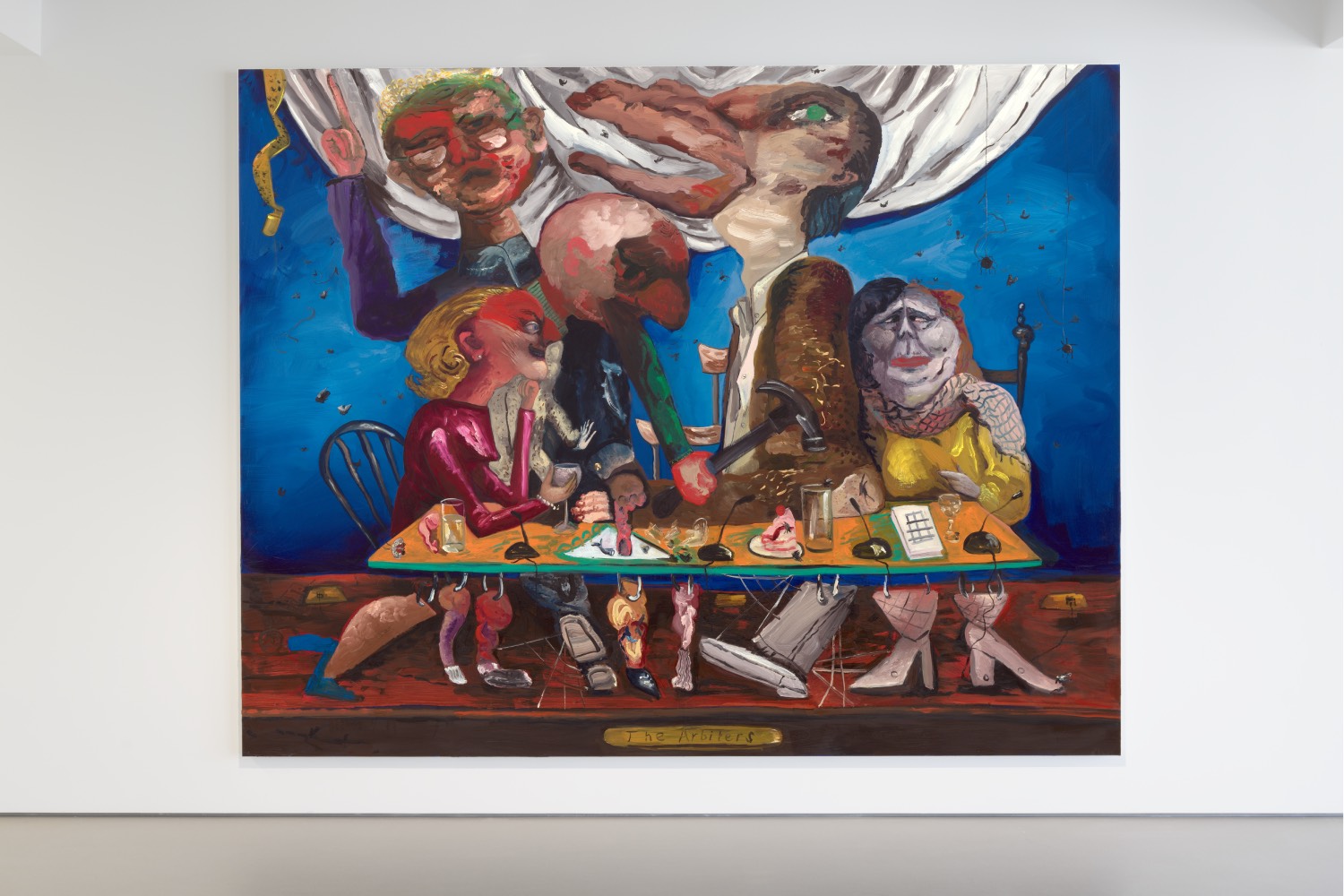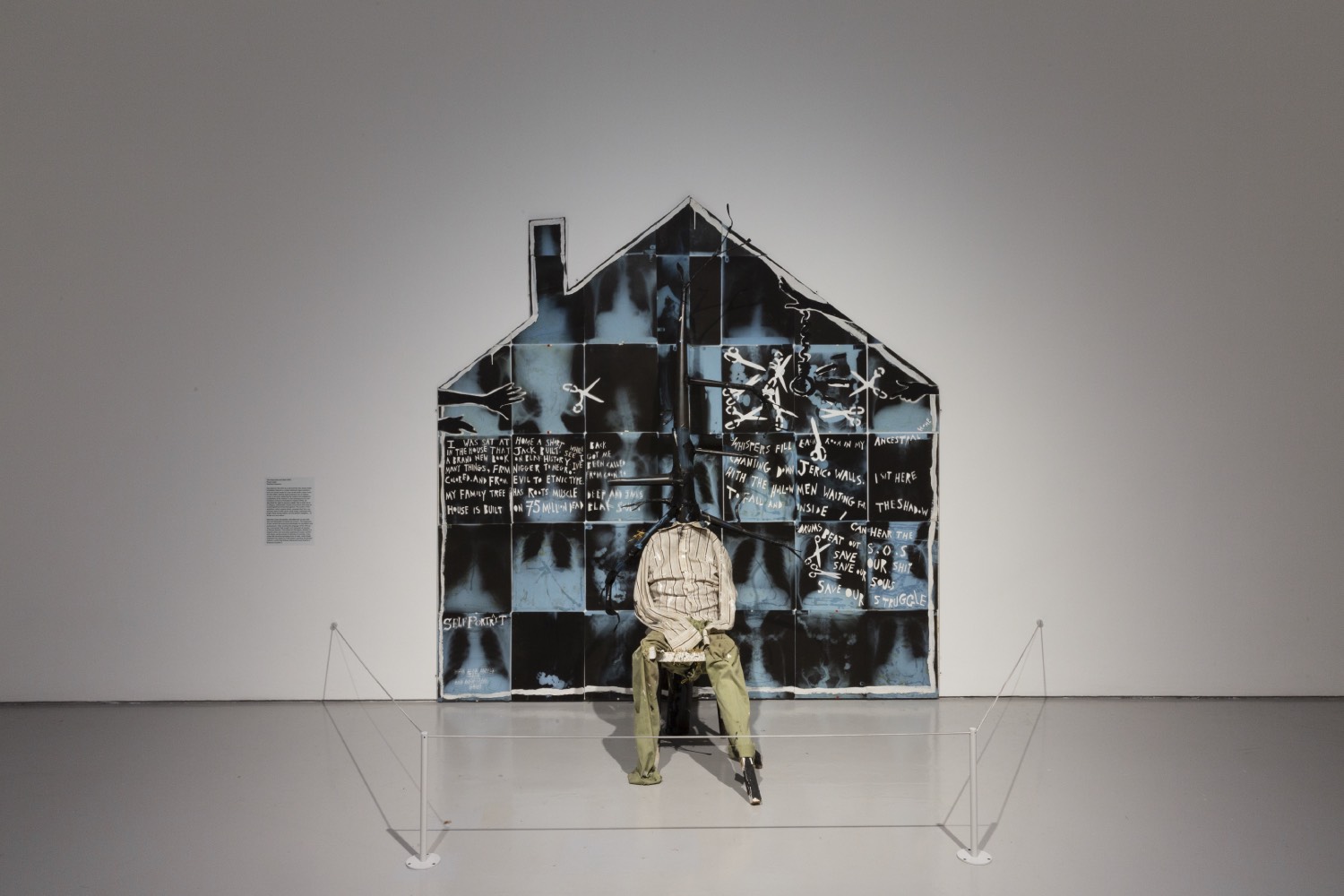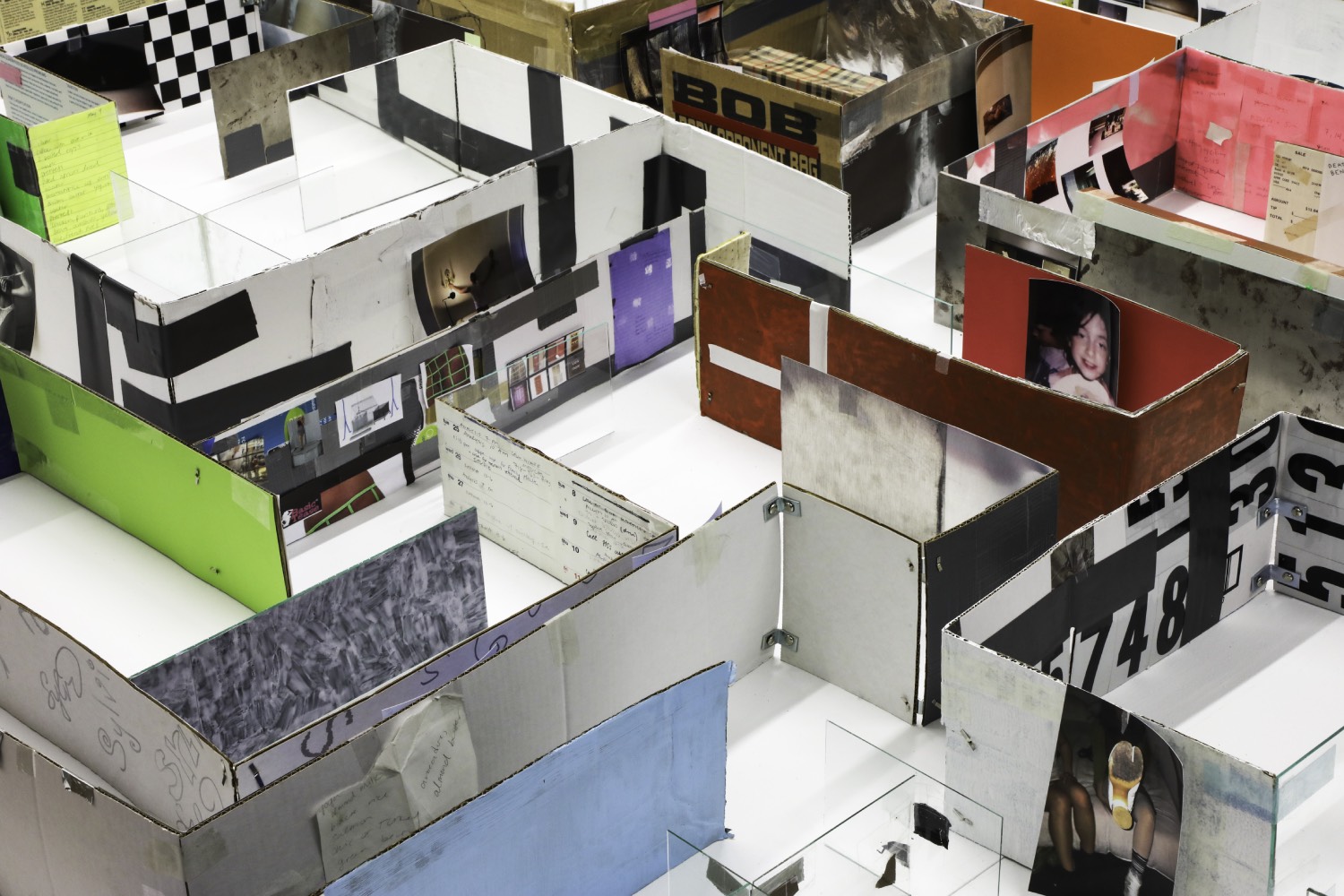I will start with a confession: I once bumped into Dana Schutz in the center of Athens on one of those really hot summer days. We smiled at each other, her eyes peeking out from behind her big glasses, and her long curly hair framing her face like a halo. I didn’t recognize her at first, but then it clicked when I visited her exhibition “The Island” at the now-established annual rendezvous of The George Economou Collection.
Entering the exhibition and seeing the very first painting, Daughter (2000) — the earliest work in the show, which she started during her studies after visiting Paris — felt like seeing her again. The standing figure welcomes visitors, wearing a T-shirt with Courbet’s L’Origine du monde (1866), likely bought from the Musée d’Orsay gift shop, and a Eiffel Tower necklace. Though not explicitly self-portraits, these elements felt intimately familiar.
The exhibition features twenty significant works spanning more than two decades, from Schutz’s first mature paintings completed in the early 2000s to a composition finished this year. Curated by Courtney J. Martin, it expands across the Collection’s impressive space in Marousi, with its clean lines, extensive use of glass, and sleek aesthetic. The show explores the tension between individual bodies and groups of people, posing certain questions: How do you become part of a group? And how does a group transform into a teeming, volatile crowd?
On the ground floor, Swimming, Smoking, Crying (2009) depicts a woman at sea, performing all three actions simultaneously. She struggles to move, to exist, but keeps going. I can almost hear her heavy breathing as she tries to reach something. Her head, nearly cropped, appears like an island — individuals as islands in themselves, together but alone. The title of the exhibition, with its connection to the islands of Greece, extends beyond mere geography to this notion of isolated bodies. This motif is repeated in Carpool (2016), in which a group of men in a moving car each seem to wish they were somewhere else. One head leans strangely, almost disconnected from the body — perhaps resting? The details are mesmerizing, from the line of hair on a hand to a little tree air freshener and a bright sun.
As you ascend, the architecture allows natural light to penetrate the interior spaces, offering an ideal environment for the exhibited works. On the first floor, Schutz skillfully juxtaposes a set of charcoal drawings with oil paintings. Though not directly correlated, both attest to her cinematic pace. Works like Getting Dressed All at Once (2012) and Sneeze (2001) present bodies in frantic movement, sometimes transformed or disfigured. You can listen to the air passing through body parts — pushing, squeezing, blowing, and changing them — bodies shaking or even exploding.
On the final level, a selection of large-scale works (all oil on canvas) further manifests the relationship between individual and collective power: from Google (2006), depicting Schutz herself seated at a desk in her studio, hypnotized by her screen amid discarded objects, to Fanatics (2005), showcasing choreographed protesters standing forcefully behind a temporary fence that separates them from the viewers. It feels like circling back to what you’ve previously seen, providing an organic and decisive conclusion.
Dana Schutz is an extraordinary artist, and this exhibition is seamlessly tied together with a continuous change of dynamics that nonetheless provides a sense of balance. It allows visitors to understand the depth and evolution of her skill using gestural maneuvers to achieve contrasted hues and intense tones. It offers an unparalleled survey of the developments in her style, highlighting her growth as an artist.
“The Island” is a testament to Schutz’s ability to capture the human condition with a unique blend of humor, drama, and profound insight. Each piece invites viewers to reflect on their own experiences, making the exhibition as a whole a deeply personal and communal journey.

